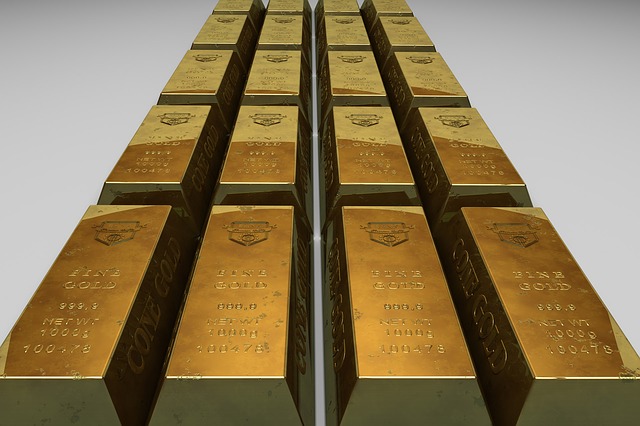Why Some Traders Are Banking On A Big Bounce In Gold

Why traders are betting on a big bounce for the metals & The surprising new case for gold
The metals are getting more precious.
Gold (GLD) and silver (SLV) hit multi-month highs Thursday, as industrial metal copper rose to the highest level since the beginning of the year. This as the dollar (UUP) continued to lose value against other major currencies.
Notably, it is a move that is strongly counter to the trend seen over the past few years, whereby metals prices have fallen mightily as the dollar has soared.
"We're seeing a massive short-covering rally right now, that's all it is," commented David Seaburg, head of equity sales trading at Cowen and Co., in a Thursday "Trading Nation" interview.
"You're going to have an opportunity here, maybe for the next month or two, to make some money here near term on the upside" for metals, and to the downside for the dollar.
Still, Seaburg warned that given the macroeconomic environment, "it is a structural short still; you lay them back out, they're going to go a lot lower."
However, Larry McDonald of Societe Generale sees the same trade as potentially having more room to run.
It is because the market is starting to price in less tightening from the Federal that "you're seeing a major reversal in gold miners (GDX) (GDXJ) (SIL) and commodities," McDonald said Thursday on "Trading Nation." This because the dollar's rise has largely been driven by expectations the Fed would raise rates (TLT) even as other central banks' policies were still in stimulus mode.
"We're probably in the mid-to-early innings of this game right now," the macro strategist said.
The surprising new case for gold
Could low inflation — often considered a scourge on gold prices — actually be bullish for gold?
It is typically argued that rising inflation is necessary for gold prices to rise. The general idea is that gold is priced in U.S. dollars, and as each dollar becomes less valuable, it takes more of them to buy the same amount of gold. It is along these lines that gold's dramatic drop over the past few years have been pinned on ultra-low inflation and a strengthening U.S. dollar, particularly after much gold was bought amid the belief that inflation was set to soar as the dollar collapsed.
The idea that inflation is a necessary condition for higher gold prices may explain why gold sellers like Peter Schiff continue to make Rube-Goldberg-ian arguments for why inflation will rise, even as they simultaneously and somewhat contradictorily argue that the U.S. economy is in a recession (contradictory because most people would not pay higher prices for the same goods in a worse economy, which is why inflation and economic growth generally rise together).
However, there's another tantalizing possibility for gold bugs: Perhaps ultra-low inflation could actually send gold prices higher, through the mechanism of negative central bank policy rates.
In a continuing battle to combat long-stagnant inflation and economic growth, the Bank of Japan has cut interest rates to negative 0.1 percent. This follows similar moves by Denmark, Sweden and Switzerland.
According to currency strategist Boris Schlossberg of BK Asset Management, "Negative interest rates have provided a fundamental reason to own gold. Just think about it: If you own gold and it stays stationary for a period, that's going to beat cash in Japan or Switzerland."
The basic idea is that gold and cash compete for a similar pool of investors' money. If the central banks implicitly or explicitly causes cash to yield negative returns, then gold will look better in comparison.
Now, gold also grants a negative return in practice, because it costs money to store safely. But it still becomes relatively more attractive.
That said, using math to explain what gold prices will do may a fool's errand. As Warren Buffett saliently argued in his 2011 shareholder letter, gold produces nothing and does not grow, leaving its value in the hands of other investors, who may or may not look more fondly on the yellow metal than its current holders.
For such a sentiment-driven asset, the mere specter of negative rates could have a profound effect.
"What people are going to understand is that gold provides a store of value," Phillip Streible said Tuesday on CNBC's "Power Lunch."
Streible, a strategist with RJO Futures, predicts that the gold price will soon rise to $1,200 per troy ounce, which is about $70 above current levels.
